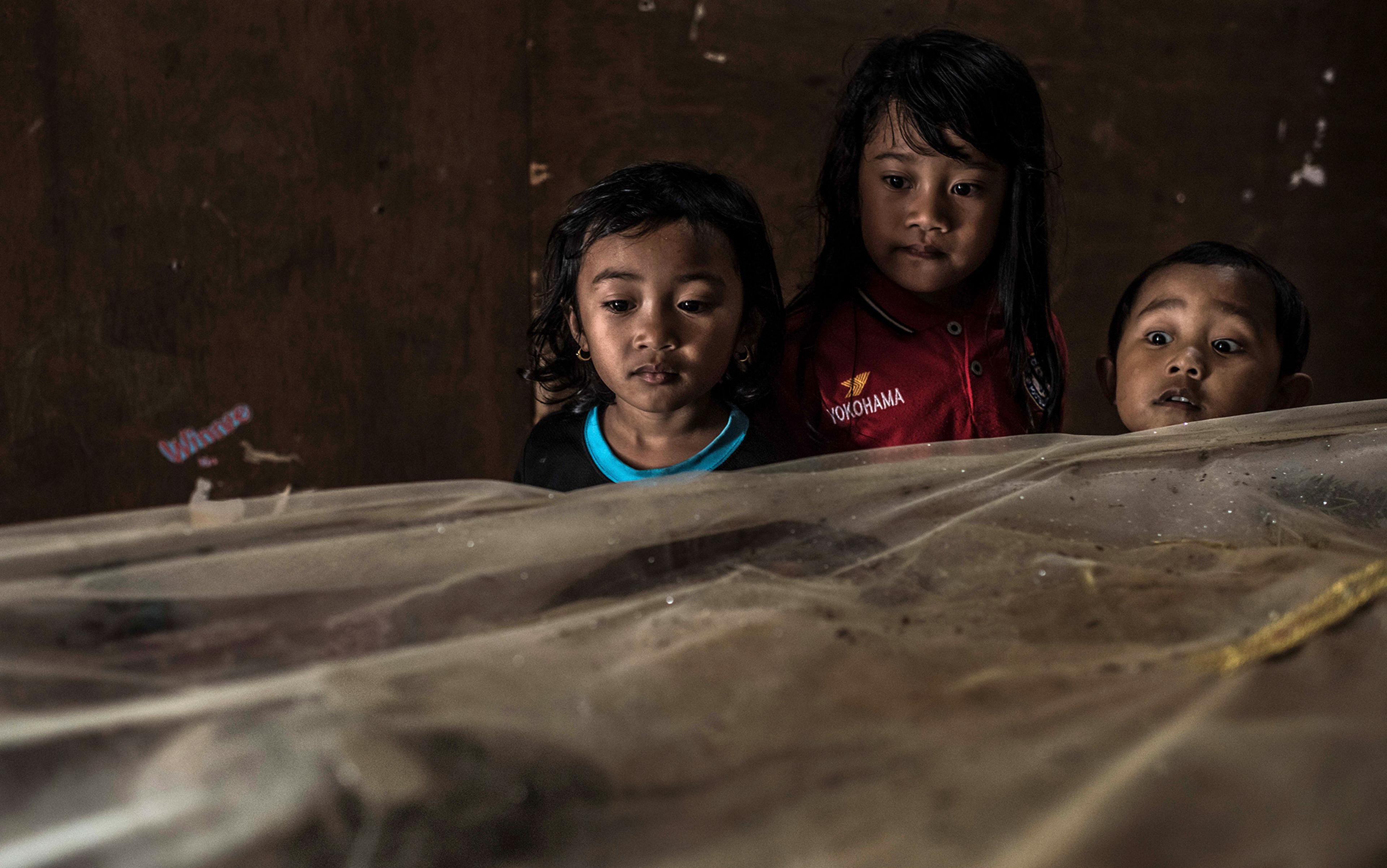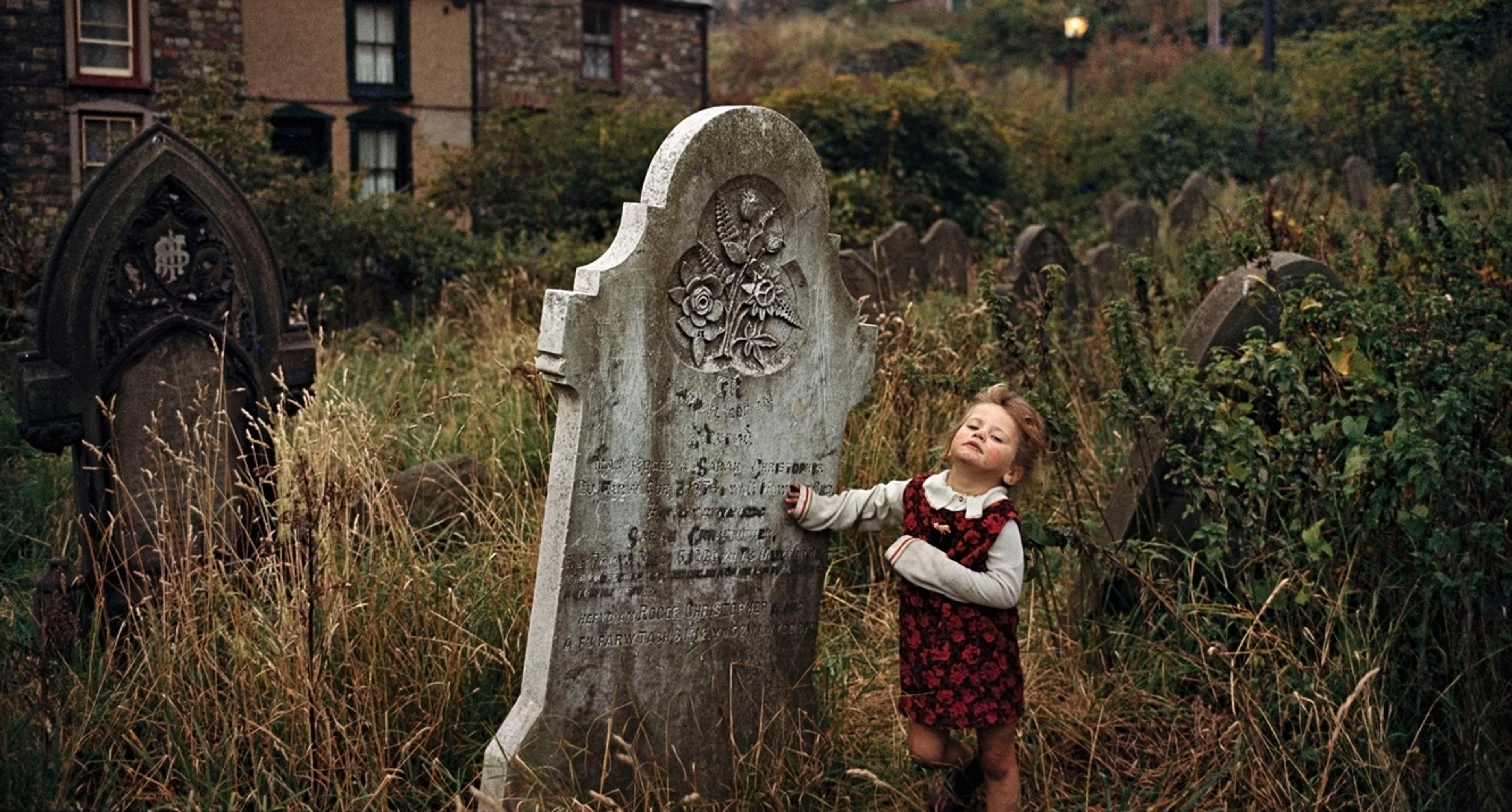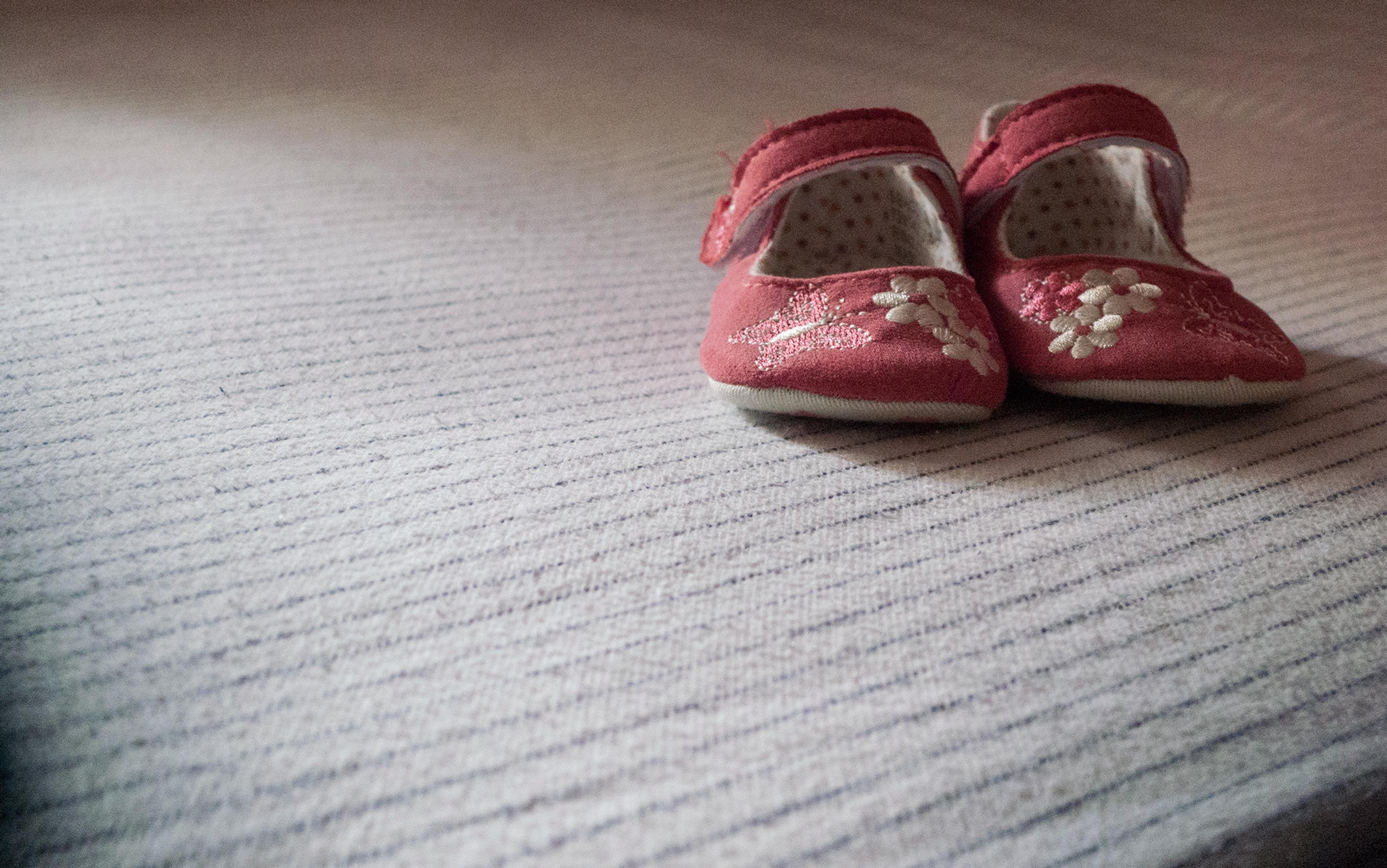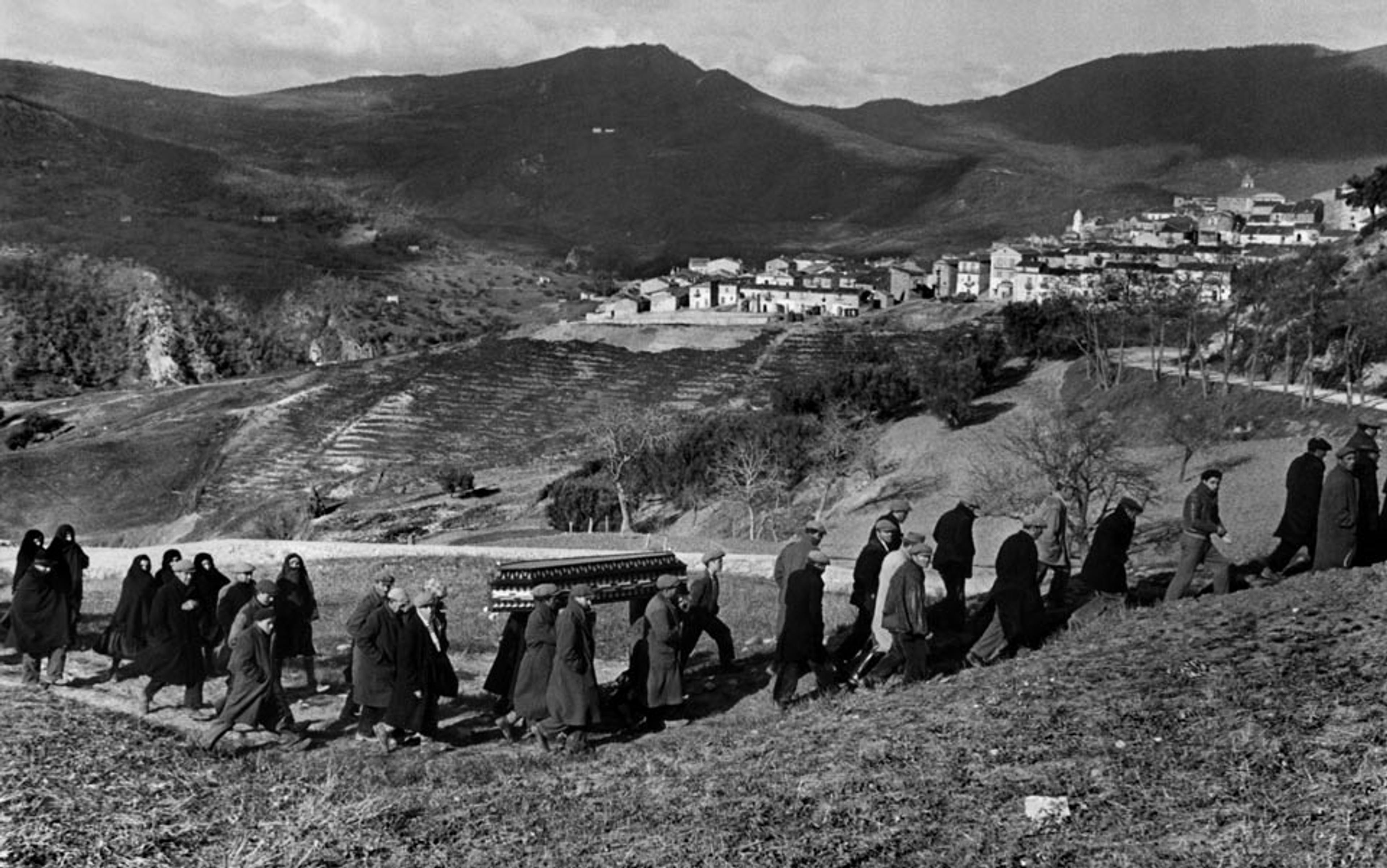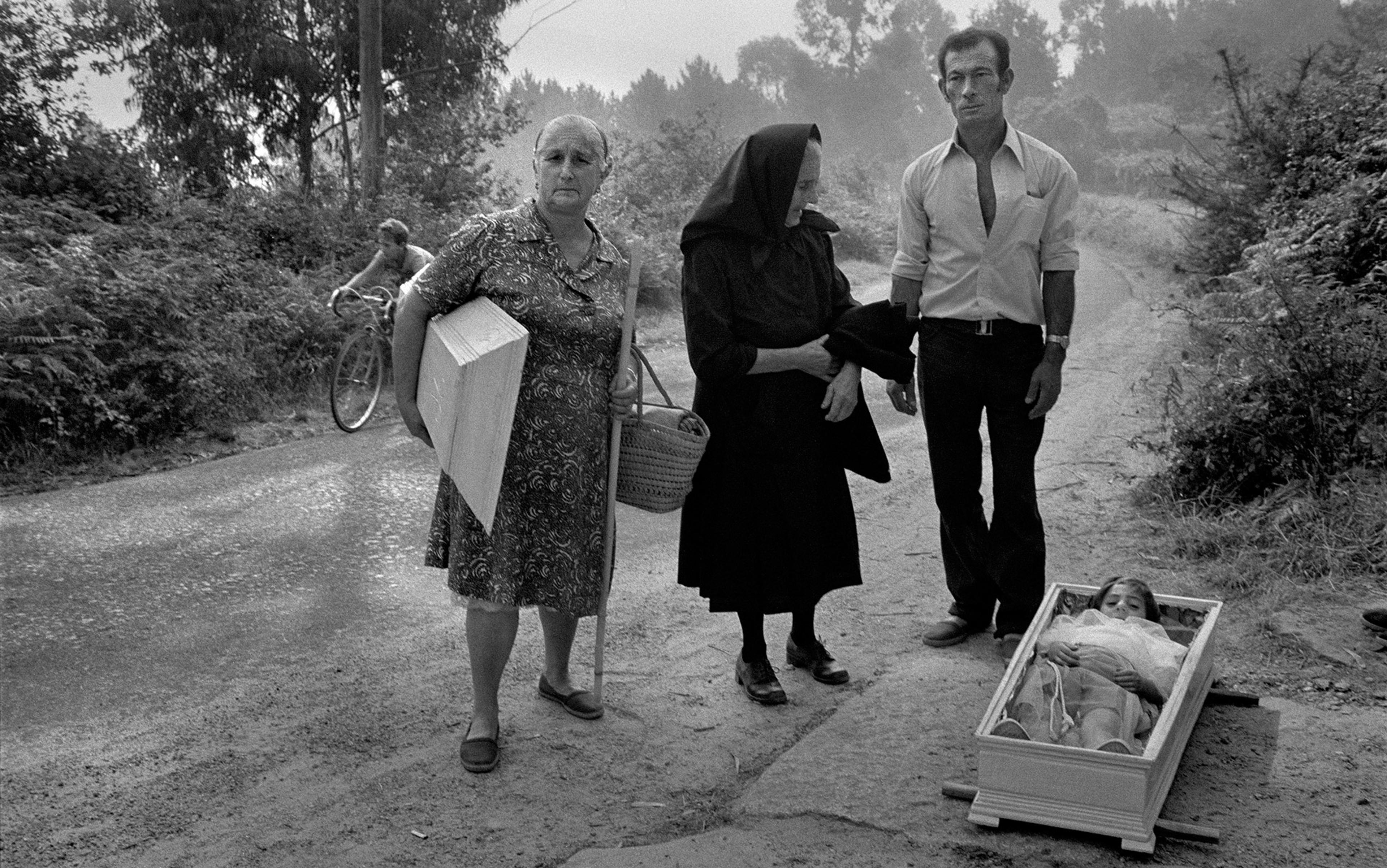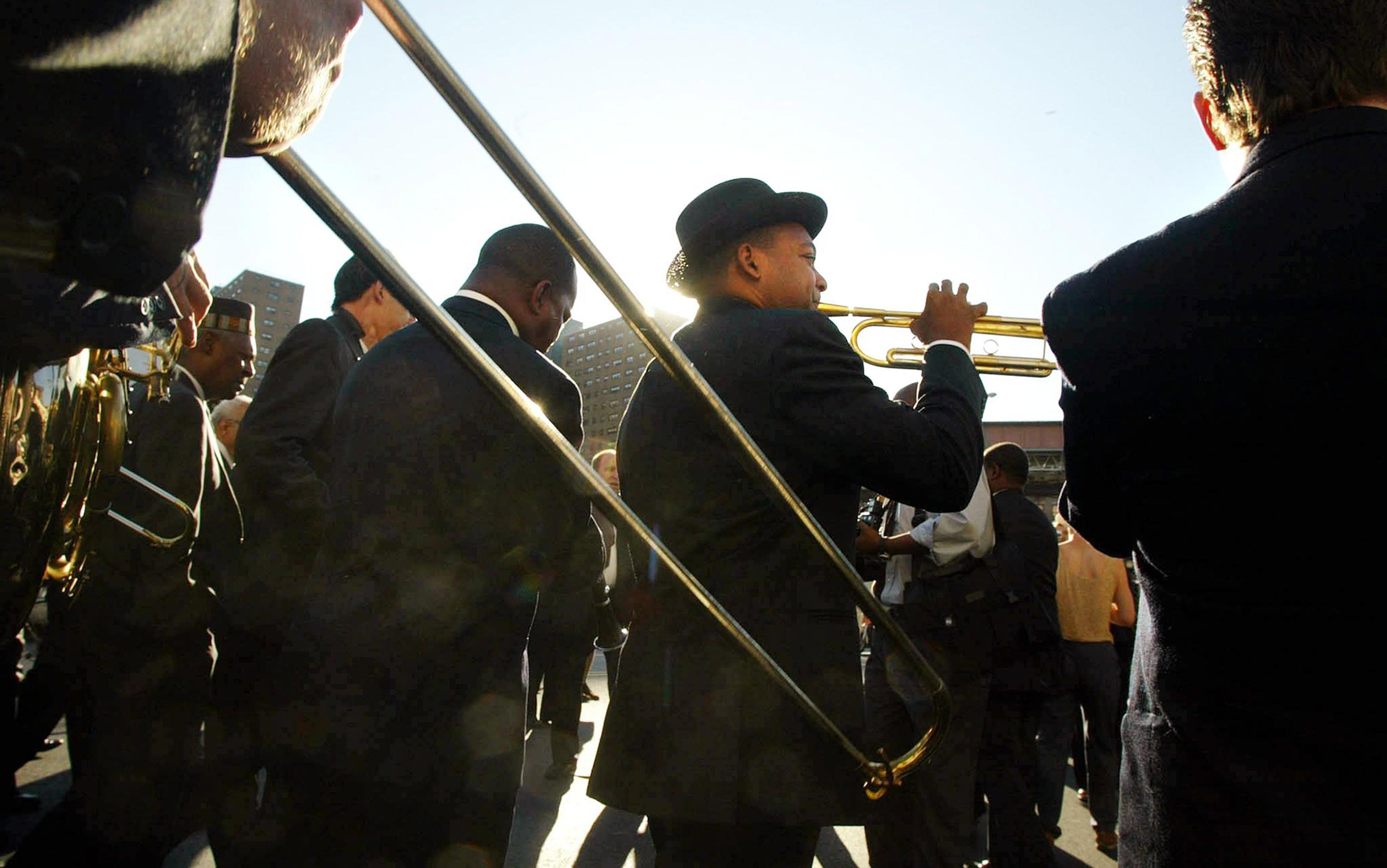One of my four-year-old twins is obsessed with death. She wants to know everything about dying. Again and again, she asks me to tell her about what happens when people die. Initially, I was a little surprised by her fascination with ‘died’ people, as she calls them, but then it became clear that she was thinking a lot about this whenever she was quiet.
‘Will you tell me more about dying. What happens when people die?’ she asks me every night before bed.
‘Their bodies stop working. Their hearts stop working,’ I tell her.
‘Is this what happened with Naanaa?’
Naanaa – my father, their grandfather – died in November last year. The twins met him only once, just before their third birthday when we visited India in 2019, although we tried to speak regularly over FaceTime. We were due to visit again in early 2020, but then the COVID-19 pandemic struck, and slowly he became more ill, more frail; the loneliness and isolation of the lockdown, and the lack of adequate healthcare during these weeks and months, took their toll on him.
Preschool children can make sense of death, but only through their parent’s grief, and this is clearly what is happening here: I’d travelled to India and stayed for a week after my father’s funeral and was very open with my children about my sadness. I want them to understand that their grandfather is dead, and I want them to know him, if only through my memories. I also want to normalise talking about death going hand-in-hand with life, especially as right now, with the world in the midst of an unprecedented pandemic crisis, my children hear my husband and I talking about death so often.
I am acutely aware how often children are left out of conversations around death because adults are hesitant (even avoidant) about discussing it; they fear upsetting or scaring their children, or worry that they’ll be unable to understand the concept of death. Research from 2014 based on interviews with parents and teachers of three- to six-year-old children in the US Midwest identified a tendency among modern parents to assume that children are too immature emotionally to comprehend death. According to the UK charity Winston’s Wish, which estimates that one child in Britain is bereaved of a parent every 22 minutes (that’s approximately 24,000 children per year), there’s still a pronounced reluctance among parents to discuss death with children, and a lack of understanding of how children process death. Rather than allowing death to be a natural part of life, parents shield and protect children from the realities of death.
I try to tackle matters at a pragmatic, scientific level, keeping close to the facts, since research shows that it’s best to stick to biology when explaining death to children under six. I try to find books like E B White’s Charlotte’s Web (1952) that might help my four-year-olds better grasp death and loss, without invoking a spiritual dimension, and I struggle. There aren’t many research studies that explore the effects of parent socialisation and communication on children’s understanding of death, and while there’s no lack of websites offering tips on how to talk to children about death, most of these are questionable and disregard children’s cognitive development. I put out a call on Twitter, which unearths some helpful books, but mainly it underscores a clear lack of literature for younger children that grapples with this subject in a pragmatic manner.
Of course, how we understand death in biological terms has changed over the years. For a long time, the clinical definition of death was the absence of a heartbeat, but stopped hearts can now be pumped by machines. So the definition was modified to include the ‘irreversible cessation of all functions of the entire brain, including the brain stem’. In Western society, clinical death is linked to eight criteria: the absence of a spontaneous response to any stimuli; a complete lack of response to even the most painful stimuli; the lack of spontaneous respiration for at least one hour; the absence of postural activity, swallowing, yawning or vocalising; no eye movements, blinking or pupil responses; a flat electroencephalogram (EEG) for at least 10 minutes; a total absence of motor reflexes; and there being no change in the above criteria after 24 hours. In other cultures, the notion of a person ‘dying’ can be more abstract and less rigid: in some South Pacific cultures, for example, even when a person is sleeping or ill, they can be called ‘dead’, so someone can die several times before they have died in biological terms.
I remember the first time my own children started making a sense of ‘died’, when they saw a ladybird in the garden that wasn’t moving. ‘Make it move, Mummy,’ they would plead, imploring me to wake up the ladybug. And, then there was our elderly neighbour who died just before the last lockdown in 2020, and they must have overheard us talking about her. ‘Has the lady gone away somewhere?’ one of them asked me but then immediately forgot about it. This time, though, the questions keep coming.
Where does this fascination with death come from? Babies don’t have a sense of death. Before the age of two, the child can pretend that death is something that doesn’t happen if they can’t see it. In fact, children don’t have much sense of death until the age of three. They might perceive it as being different, but there’s no concrete sense of loss. It might be that they’re affected by the emotional reaction of their parents and caretakers if there is a death in the immediate family, or if they lose a pet.
In 1948, the psychologist Maria Nagy’s now-classic analysis of responses from around 350 children aged three to 10 revealed three distinct stages in the way they start to understand death. Between the age of three and five, they still see death as a journey from which a person can return. They might only understand that adults in their lives hide themselves in games such as peekaboo and then reappear again, or that their parents disappear on work trips but return at some point. Children under five don’t have a notion of separation whereby they understand where the dead are located. Instead, they personify death, sometimes thinking of death as ‘going to sleep’. The notion of permanence is difficult for them to comprehend. Nagy’s study showed that children think of death as temporary. They can comprehend that a heart ceases to beat, but often they can focus only on one concept at a time, and it’s difficult for them to make sense of how long death will last. Children try to rationalise permanence by explaining that heaven is too far away or that the coffin is shut too tight for the dead person to return. At around age six, children start to understand the irreversibility of dying. And, slowly, they understand the cause: that the loss of bodily functions leads to death.
According to the Swiss psychologist Jean Piaget’s influential cognitive development model of the 1920s (a reworking of an earlier model by the US psychologist J M Baldwin), there’s a logical structure to how young children form schemas of the world through their mental and physical actions. As they gather more knowledge and as their self-centred view of the world expands to include other perspectives and more abstract conceptualisations, children update these schemas. At around age six or seven, children enter what Piaget called ‘the concrete operational stage’ where they can process more logical thought and reasoning: they seem to grasp the universality of death now, although they’re still confused by the concept of what happens afterwards. Even at this age, some children still rely on magical thinking to make sense of death, associating it with a figure they can define, such as a ghost or an embodied form, for example the Grim Reaper. But as they move into the ‘formal operational stage’ at around age 12, their broader scientific reasoning ability allows them to grasp more symbolic and abstract notions of death, even including a theoretical perspective on how death is conceptualised.
Telling children that loved ones ‘are at peace now’ or that ‘they are happy in heaven’ can cause complications
Children’s understanding of death is also shaped by their cultural and religious backgrounds and their unique life experiences. The Russian American psychologist Urie Bronfenbrenner’s human ecological perspective provides an important organising framework for understanding how children’s environment – what in the 1970s he termed their ‘mesosytem’ – acts to affect their development. This mesosystem can include the immediate family and their views and reactions to death, school and friends, and the broader culture. In a study from 2019, researchers found that preschoolers in India displayed a more mature understanding of the irreversibility and universality of death, compared with their understanding of its nonfunctionality (ie, that all the body’s functions cease). A 2014 study with 188 children (both white British and British Muslim children living in London, and also Pakistani Muslims living in rural Pakistan) published in the British Journal of Developmental Psychology found that rural living can also affect conceptualisations of death: Pakistani Muslim children understood irreversibility earlier than the children in both British groups.
Exposure to death, war and strife can also exert an influence. Central conceptual structures theory, a neo-Piagetian theory proposed by the Canadian psychologist Robbie Case in the 1990s, complements this by suggesting that children move back and forth between the different developmental stages and strategies until they’re able to develop a more integrative approach to problem-solving. Cognitive ability isn’t necessarily a barrier to the way children understand death to be separate from sleeping or that it’s irreversible, even if the language used about death is sometimes an obstacle. Often, adults explain away death by telling children that loved ones ‘are at peace now’ or that ‘they are happy in heaven’, which can cause complications from a cognitive development perspective for a child, in conflicting with their biological understanding of death or alleviating negative emotions about why the person chose to leave in the first place, the notion that it was somehow their fault if they did.
The easiest thing would be for me to tell my children that, yes, their grandfather is gone, and he is never coming back: that is what happens when people die. But I’m still not in a place where I can talk about my father having gone forever. The notion of permanence is something my own children seem to be struggling with right now, and something I have to remind myself of too, through my conversations with them. My father is not coming back. I can sometimes close my eyes and imagine him to be still there, in India, and forget that he is no more. Our many thousands of miles of separation means that I have always been missing him, since I moved to the UK 20 years ago. I am trying to figure out how to start grieving his loss when I have always been grieving this separation.
In a way, I suppose the cycle of grief isn’t that different for grown-ups. The first stage of grief and loss is heavily weighted with guilt, just as it is for young children caught up in an egocentric view of the world in which anything that goes wrong must somehow be their fault. In a similar vein, I haul myself over the coals: if only I’d spoken to my father more often… if only I’d visited India more often… if only I’d looked after him. We keep walking this torturous path, asking questions of ourselves, berating ourselves, trying to take control of the helplessness we feel. Children do the same thing, though not only as a means of taking back some control but because, until they’re six or seven, their circle of reference is very small. They see the world from their perspective alone, not yet grasping that things can look different for different people.
Although my children and I looked at the lifecycle of butterflies and frogs last summer, and talked about how, when an insect dies, another one is born from the eggs, they took this matter-of-factly, as something that happens in nature, not relating it to how things happen with us too. The biological aspect of death, even its inevitability, is easier for children to comprehend; that when someone is old, they die; when they get hurt and lose a lot of blood, they might die; when they suffocate and cannot breathe, they might die. But the spiritual layer still eludes them. One of my four-year-olds sees a burial ground as we drive past a church, and has many questions about what happens to the people under the gravestones. The next morning, I find her on top of me, asking if we can rescue all the people in the graves by going and setting them free. Somehow the idea of freeing them aligns with the spiritual belief of a soul passing over to another dimension, away from the circle of life and death.
‘Could we bring Naanaa back to this room maybe even if he lies on the floor?’ one of them pipes up one night. And: ‘Where do people go once they are dead?’ I’m not sure where they have got the idea that a dead body has to be laid down on the floor. I think of the Hindu funerary rituals in which the deceased is placed on the floor, their toes tied with a string, and their feet pointing towards the south, which is the direction of the god of death, Yama. They hadn’t been there when all this happened for my father. I hadn’t been there either: his cremation had to be done in a hurry, within a few hours of his dying, and with just a handful of close family to hand, due to COVID-19 restrictions. There were no shlokas (mantras) and no cremation near the Ganges. He had to be cremated quickly in an electric crematorium and I never saw his dead body. It all seems unreal, surreal even. Did it even happen if I didn’t see it?
Attending funerals helps children acknowledge the death and receive comfort and assistance
Like my children, I don’t even know where people are, once they are dead. Do they just disappear into the ether? One minute here, breathing, screaming, raging, laughing, disappointed, proud, happy, sad, and then, the next second, in a flip of a switch, they are nothing. How does this work? I can’t get my head around it. As someone who was raised a Hindu, but who doesn’t follow any religious ideology, I am reluctant to impose notions of heaven or immortality on my children. Yet practices that lead to symbolic immortality can help people, especially children, cope with the awareness of death, according to the terror management theory (TMT) proposed by Jeff Greenberg, Sheldon Solomon and Tom Pyszczynski in 1986. TMT, derived from the Pulitzer Prize-winning book The Denial of Death (1973) by the US anthropologist Ernest Becker, proposes that cultural beliefs and escapism can assuage children’s terror and anxiety around death and mortality.
The Australian psychologist Virginia Slaughter has proposed a model of sub-concepts through which children develop an understanding of death via the various layers of biology and spirituality. Indeed, in some cultures, death is seen as an integral part of life. In her TED talk ‘Life That Doesn’t End with Death’ (2013), the US cultural anthropologist Kelli Swazey talks about the people of Tana Toraja in eastern Indonesia, who refer to the dead person as one who is only ‘sick’ or ‘asleep’. The person in question is laid to rest in a spare room where all the daily rituals of feeding and caring continue to happen, and they remain an integral part of the family’s life. During this transition period, the younger members of the family are able to acquaint themselves with that liminal space between life and death.
Critically, rituals help us to externalise feelings we might otherwise repress. Children can learn to deal better with death’s permanence, for example, if they’re allowed to attend the funeral. The US bereavement experts Phyllis Silverman and J William Worden have shown that attending funerals helps children acknowledge the death and receive comfort and assistance. Their 1992 study looked at 120 bereaved children, 95 per cent of whom had been allowed to attend the funeral. Two years later, these children acknowledged that being at the funeral had been important in helping them honour the deceased and in receiving support and comfort. In their 2001 study, the US clinical psychologists Mary Fristad, Julie Cerel and colleagues reported that specific aspects of funerary rituals such as music and readings were of critical importance in assisting children through these emotionally charged events. Their study with 318 subjects aged between five and 17 found that children described active participation (eg, choosing flowers) as a useful action, and that the symbolism of rituals, such as playing a favourite song, brought them long-term comfort.
Rituals, storytelling and play all help children to vocalise emotions that they might find difficult to convey otherwise. They can act as buffers in times of emotional turbulence. I remember how I lost my grandfather when I was just six or seven, and we went to stay at my grandparent’s house for a fortnight, through all the Hindu rituals, until the 13th day when prayers are read for the departed soul to achieve sadgati (salvation). All the cousins were there, and the children had a peer group of varying ages as a support while we processed our loss and grief.
In modern families, the experience of death has changed a good deal over the years, since many children don’t experience a death in their immediate families until they’re much older. In the distant past, death was very much part of everyday life, given the high rates of mortality, and most deaths happened at home – the result of illness. As people usually lived in large close-knit communities and families, children were very much part of the rituals surrounding a death. But that changed as families moved away, and as people began living longer. Now, many of these traditional rituals have shifted to modern practices, which affects how children perceive the realities of death. Even in Irish culture, which has traditionally been one of the most death-conscious, placing great value on the social dimension of dealing with death, old-style wakes held at home are being replaced with other, quicker approaches. This has reduced children’s participation in death rituals, putting greater responsibility on parents and teachers to make grief education part of children’s education.
These days, with families typically spread around the world, so many of us face the death of a loved one at a distance that cannot be bridged, something the pandemic has cruelly highlighted. It has become even harder for children to understand how someone who was already far away actually isn’t there anymore. That feeling of loss, abstract though it might be, coupled with not having the space to talk about their feelings, can be really tough for children of all ages. In the midst of India’s COVID-19 catastrophe, my social media timeline and family WhatsApp groups were filled every day with the deaths of people, friends and family, and I kept thinking of a generation of children who’ll grow up without ever knowing their grandparents. A whole diaspora will now have to talk to their children about the death of a loved one many thousands of miles away – those grandparents, uncles and aunts that children have only ever met over Zoom or FaceTime, through tiny digital squares. Often, children make sense of the permanence of death only as they start missing the person lost to them. This is especially hard when they aren’t directly aware of an adult being gone. The distances between us, the loss of people who aren’t seen on a regular basis is difficult to explain and comprehend because the notion of ‘missing’ is impossible when the person had already been missing from the child’s life.
It’s clear that children have the ability to understand death, especially from a biological perspective. This is universal. But it’s also clear that children’s emotional maturity depends on their environment and their religious or spiritual beliefs. This is not universal.
Children brought up with beliefs about an afterlife, for example, might believe that bodily and mental functions continue after death, and that a person keeps on living in some way. This can be comforting to children in confronting their own mortality. The Vezo people of rural Madagascar believe that, while the bodily functions cease, some of the mental functions such as knowing and remembering can continue. A 2010 study among the Vezo showed that even five-year-old children already had a good understanding of the biological basis of death as cessation. They’re present when animals are slaughtered, are expected to attend funerals and wakes, and are obliged to look at their dead parents to ‘register’ the fact that they will never see them again. By the age of 12, these children have already started developing a robust dualistic notion of death where biological and spiritual dimensions stand together.
Given the present absence of rituals and large family gatherings, maybe we need more magical realism
A child’s understanding of death is shaped to a large extent through the conversations an adult is willing to undertake with them, to give them space to talk through their questions and help them understand that there can be more than one explanation of what happens to a person when they die. Such conversations can help children absorb that, even as the biological functions cease, it’s possible to believe in a life after death, or that spiritual beliefs can align with the scientific model of death.
‘Maybe they go to the Moon. Do you think Naanaa has gone to the Moon?’
I am noncommittal even though I would like to believe that, yes, maybe my father has gone to the Moon, looking down at us, you know.
‘How did he get to the Moon? Did he go on a special rocket? Who drives this rocket?’
The other pitches in: ‘Maybe there is a pilot you know.’
I let them figure it out between themselves. It seems easier this way. I stay quiet hoping they’ll fall asleep. I lie there in the dark churning and tying all the loose ends across the generations, these twisted strands of DNA like the red mauli string on my wrist from the puja we did for my father in India on the 10th day of his death, the thread going around and around like the love we carry for each other, even when we don’t, even when it’s not spoken. I take a deep breath, wondering whether this is just a fantasy, or whether the key to my grief lies in this wishful magical thinking, this magical world they have conjured up. And, even as I believe that I’m helping my children understand the notion of death, knowing full well now how crucial it is to their healthy development, it dawns on me that perhaps their questions are helping me deal with my grief and loss even more, to talk through it in a way that’s often not possible with the other adults around me.
I am reminded of the US psychologist Alison Gopnik who said that children’s minds are tuned to learn and, as we grow older as adults, we start taking so much for granted. And when we take things for granted, we find it difficult to unlearn what we already know and ask the right questions. In my conversations with my children, there’s the possibility of magic and fantasy, of giving space to an alternative world where my father might still exist. Within this space, my own questions about death don’t seem as irrelevant, or irreverent. In their questions, I’m beginning to see how little I’ve asked of myself and others around me to help me through this process of grief, how much I’ve tried to focus on it all being OK, even when, deep down, it really hasn’t been.
Given the present absence of rituals, of extended funerary practices and mourning periods, and large family gatherings, maybe we need more magical realism and storytelling. Maybe a magic rocket and a trip to the Moon is the answer for now. Maybe in trying to deal with death and loss, rather than explaining away the problem in a pragmatic, scientific manner, a childlike fascination and curiosity about death (and life) should be one of the steps we take. Perhaps that is the answer.
To read more on parenting, childhood and death, visit Psyche, a digital magazine from Aeon that illuminates the human condition through psychology, philosophical understanding and the arts.
